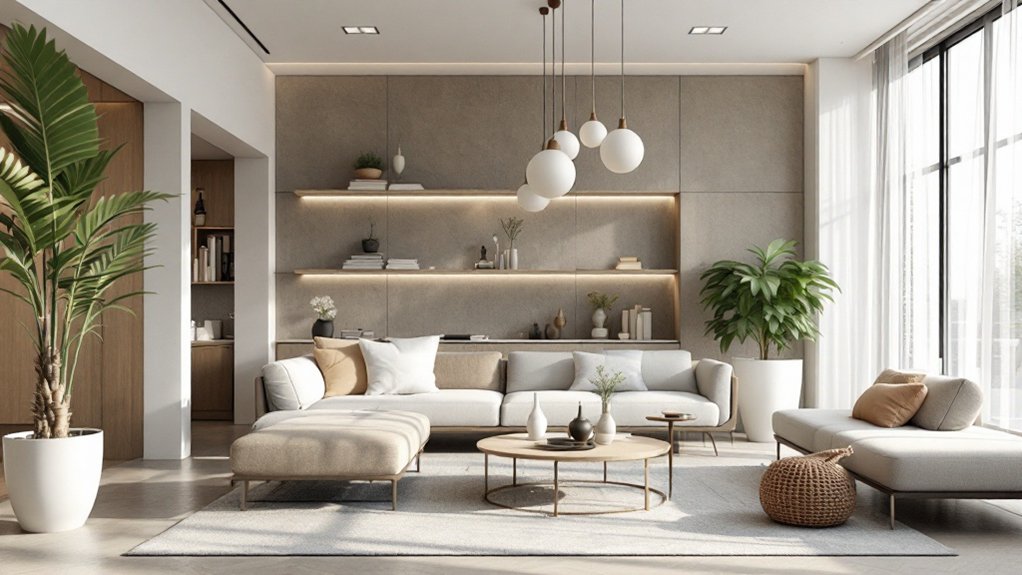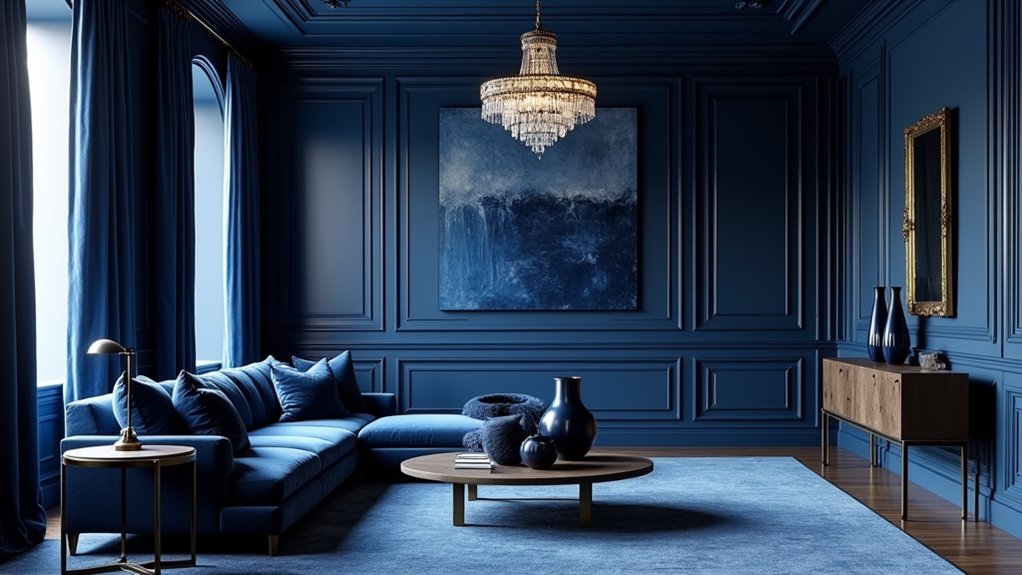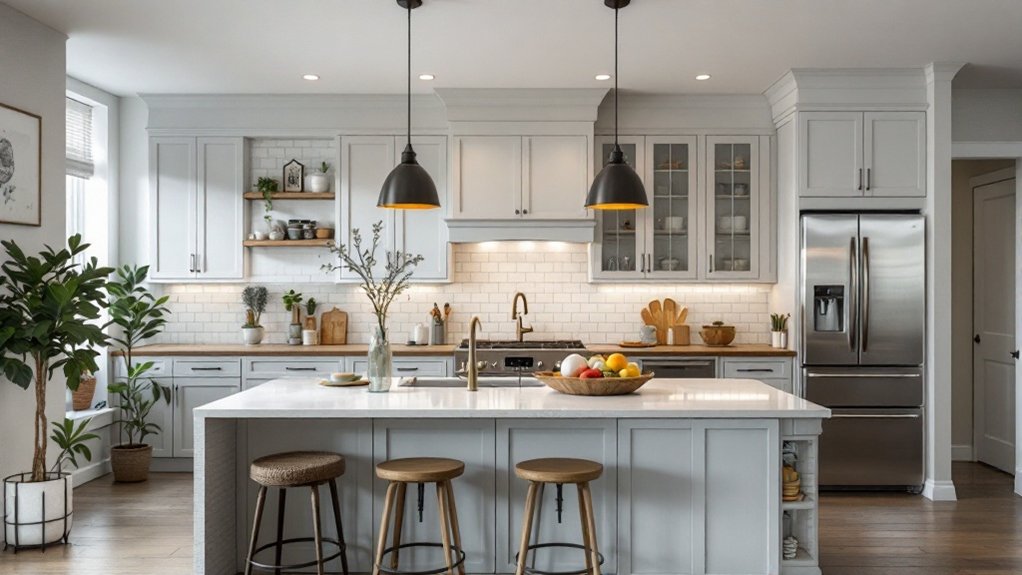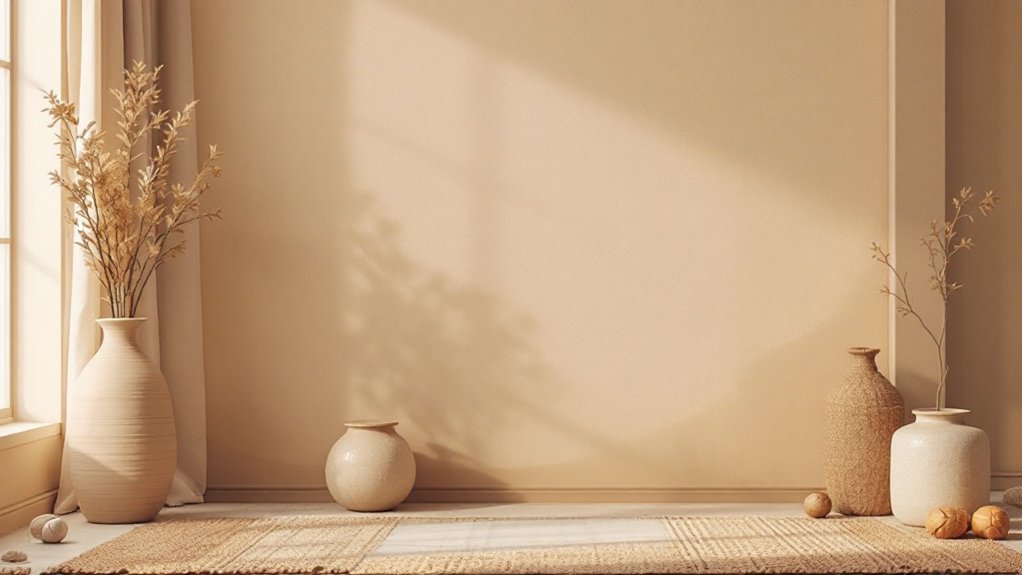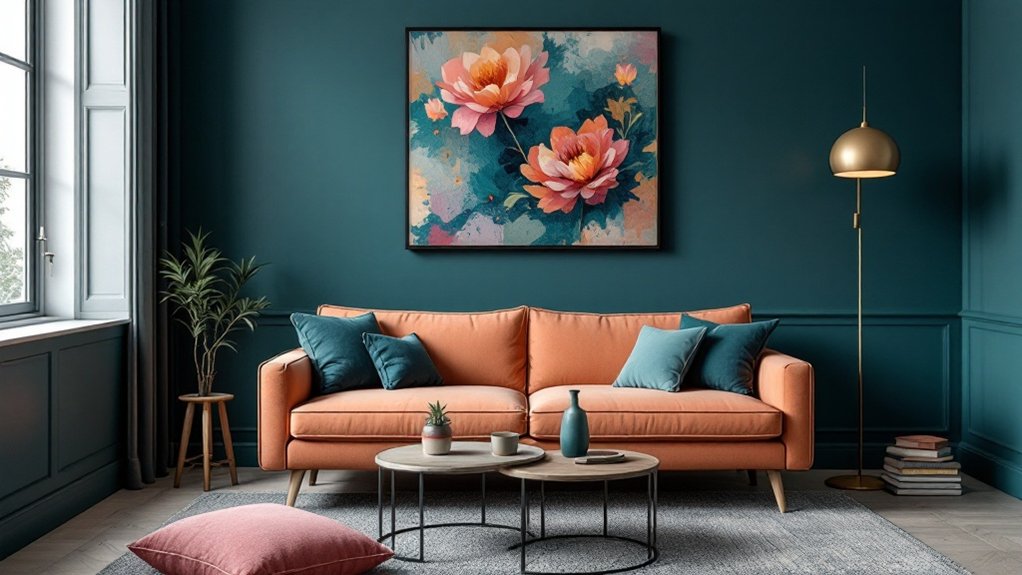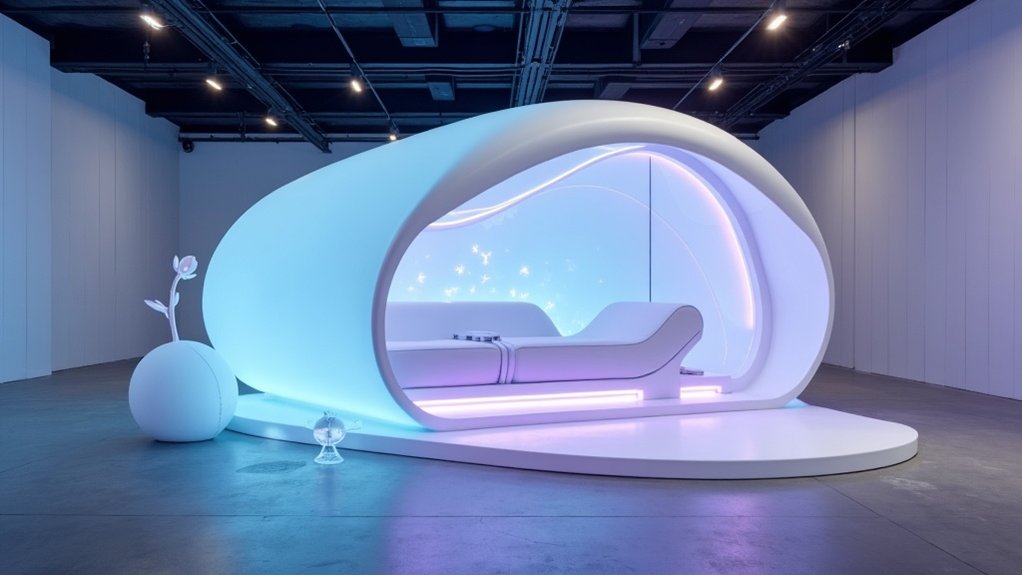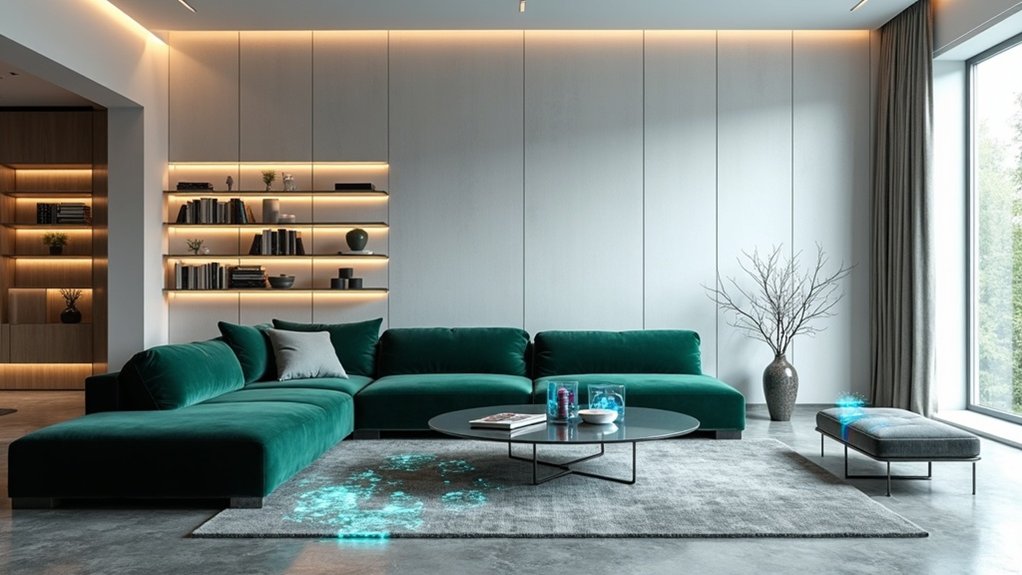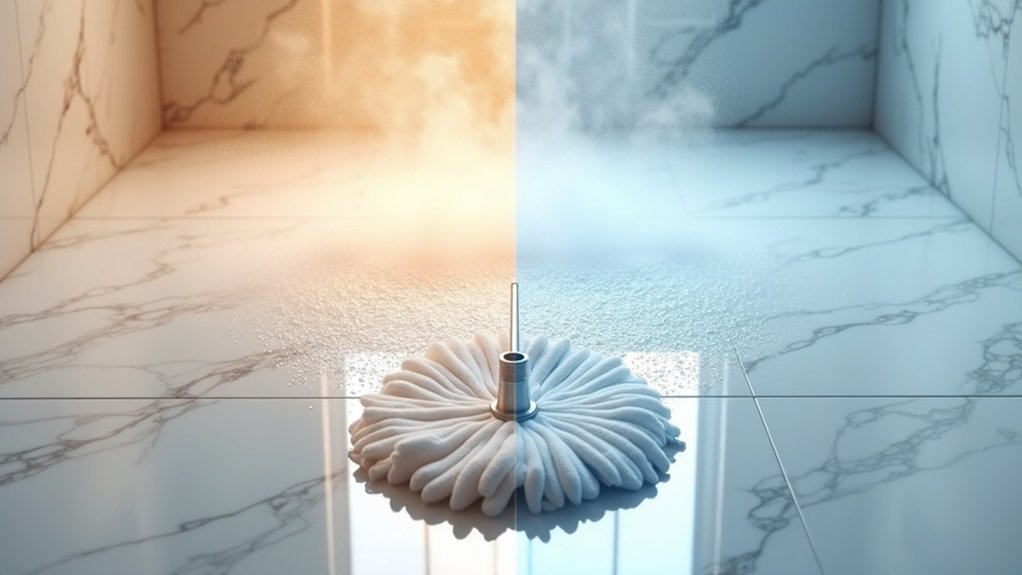Modern interior design transcends traditional single-use spaces by embracing adaptable solutions that maximize functionality. Strategic zoning through furniture placement, lighting variations, and modular elements creates distinct areas within open environments, while smart technology integration improves usability without compromising aesthetics. Convertible furniture pieces, like Murphy beds and drop-leaf tables, enable seamless transitions between activities. From ergonomic workstations to acoustic management, these thoughtful design elements transform living spaces into dynamic environments that effortlessly adapt to diverse lifestyle needs – an essential blueprint for mastering multi-functional magic.
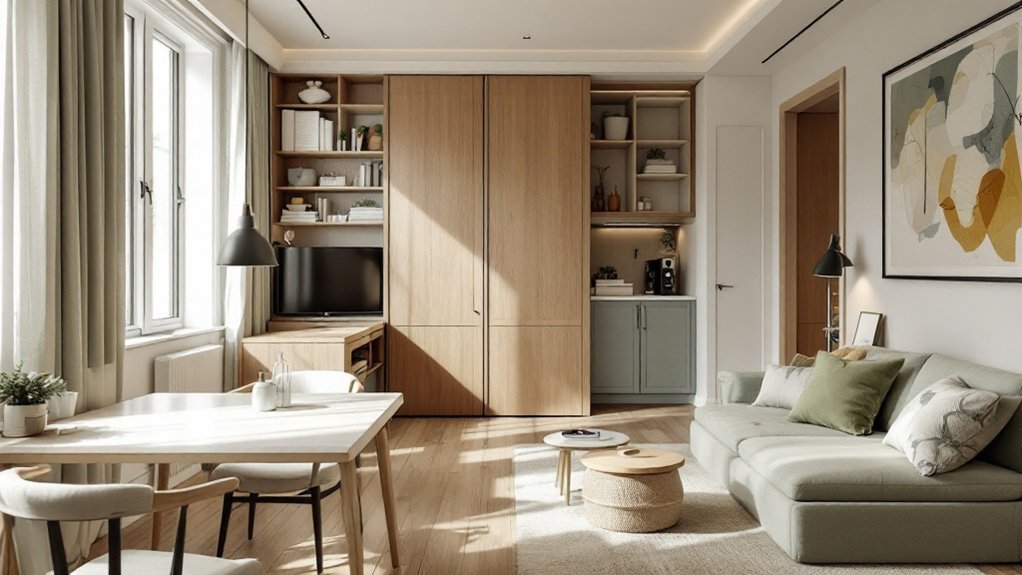
As living spaces continue to serve multiple roles in modern life, the art of designing multi-functional interiors has evolved from a convenient choice to an essential skill. Modern interior design emphasizes adaptable solutions that seamlessly transform spaces to accommodate various activities throughout the day, from work and exercise to entertainment and relaxation. Color selection creates visual transitions between different functional zones within the same space.
The foundation of multi-functional design lies in strategic zoning and thoughtful space division. Designers employ a combination of furniture placement, lighting variations, and visual cues to create distinct functional areas within open environments. Area rugs, pendant lights, and modular partitions serve as subtle yet effective boundaries, while sliding doors and curtains offer flexible privacy solutions when needed. Adaptable layouts throughout different times of the day ensure maximum functionality of the space.
Adaptive furniture forms the cornerstone of versatile interiors, with pieces designed to serve multiple purposes. Murphy beds and convertible sofas maximize floor space during daytime activities, while drop-leaf tables adjust to accommodate different group sizes and functions.
Versatile furniture solutions transform living spaces instantly, allowing rooms to shift seamlessly between rest, work, and social functions throughout the day.
Storage solutions play a similarly vital role, with built-in cabinetry and multi-purpose furniture pieces like storage ottomans and window seats eliminating clutter while maintaining functionality.
Technology integration has revolutionized how spaces adapt to different needs. Smart home systems seamlessly transition rooms from workspace to entertainment zones, while concealed charging stations and cable management solutions maintain a clean aesthetic.
"The key to successful multi-functional design lies in invisible infrastructure," notes leading interior designer Sarah Chen. "Technology should improve functionality without compromising the visual harmony of the space."
Wellness considerations have become increasingly important in multi-functional design. Height-adjustable furniture, ergonomic workstations, and zoned temperature control guarantee comfort across various activities.
Acoustic management through strategic placement of soft furnishings and panels helps create distinct environments within open layouts. Natural elements, including plants and maximized daylight, contribute to overall well-being while supporting the space's versatility.
These thoughtful design elements work in concert to create environments that effortlessly transition between functions while maintaining comfort, efficiency, and aesthetic appeal.
Frequently Asked Questions
How Much Does It Typically Cost to Create a Multi-Functional Space?
Creating a multi-functional space typically costs between $10,000 to $50,000, depending on scope and complexity.
Basic conversions with modest furniture and minimal structural changes start around $10,000, while extensive renovations incorporating smart technology, custom storage solutions, and high-end multifunctional furniture can exceed $50,000.
Design fees usually add 10-20% to the budget, with hourly rates averaging $182.
Material quality, room size, and specific functionality requirements significantly influence final costs.
Can Multi-Functional Design Work in Small Apartments Under 400 Square Feet?
Multi-functional design is particularly effective in apartments under 400 square feet, where space optimization is essential.
Through strategic implementation of transforming furniture like Murphy beds with integrated desks, storage ottomans, and wall-mounted solutions, even the smallest spaces can serve multiple purposes efficiently.
Interior designers often recommend vertical storage solutions and furniture that serves dual purposes, allowing residents to maintain functionality without sacrificing comfort or style in compact living environments.
Which Furniture Brands Specialize in Transformable or Multi-Purpose Pieces?
Several leading manufacturers specialize in transformable furniture solutions.
Italian company Clei pioneers high-tech convertible pieces with patented safety systems, while Resource Furniture offers custom-made wall beds and transforming tables.
OZZIO creates contemporary multifunctional designs focused on style and practicality.
For eco-conscious consumers, Sculptures Jeux produces sustainable transformable furniture using FSC-certified materials and photovoltaic systems that power 70% of their production.
How Long Does It Take to Complete a Multi-Functional Interior Renovation?
The timeline for a multi-functional interior renovation typically ranges from 4-8 weeks for minor updates to 3-6 months for thorough remodels.
Initial planning and design phases consume 2-4 weeks, while construction periods vary based on scope.
Factors like material lead times, structural modifications, and smart technology integration can extend timelines.
Nevertheless, utilizing pre-fabrication methods and design-build approaches can reduce completion time by up to 20% compared to traditional renovation models.
What Are the Most Common Mistakes When Planning Multi-Functional Rooms?
Common mistakes in planning multi-functional rooms typically center around four key areas: space planning, functionality, design layout, and material selection.
Designers frequently observe issues like improper scale, insufficient storage solutions, and failure to create distinct activity zones.
Further pitfalls include selecting inappropriate furniture that lacks versatility, installing inadequate lighting for varied tasks, and choosing impractical fabrics that cannot withstand multiple uses.
Poor space measurement and furniture placement can likewise compromise circulation and functionality.
